REBLOGGING HERE BECAUSE ONE OF YOU CAUSED THIS SO YOU MIGHT AS WELL SEE IT. I'M DRAWING THE CHILD AS
REBLOGGING HERE BECAUSE ONE OF YOU CAUSED THIS SO YOU MIGHT AS WELL SEE IT. I'M DRAWING THE CHILD AS A CHILD?! ?!?!?!?!?!?!




SO I HAVEN’T EVEN GOTTEN TO WATCH THE SHOW BUT HERE’S PIDGE AS A YOUNG CHILD! I’VE LOVED PIDGE SINCE I WAS YOUNG WATCHING VOLTRON FORCE! NOW HERE’S MODERN PIDGE AND I LOVE THEM? A LOT?! LOOK AT THE CHILD.
More Posts from Lil-history-egg and Others
I finished my Rome book and have now begun one about Pompeii. I’m 65 pages in and I already love it: yes, it covers the volcano, but most of the book is about “this is what the town and daily life of it would have been like, actually.” Fascinating stuff. Things I’ve learned so far:
- The streets in Pompeii have sidewalks sometimes a meter higher than the road, with stepping stones to hop across as “crosswalks.” I’d seen some photos before. The book points out that, duh, Pompeii had no underground drainage, was built on a fairly steep incline, and the roads were more or less drainage systems and water channels in the rain.
- Unlike today, where “dining out” is expensive and considered wasteful on a budget, most people in Pompeii straight up didn’t have kitchens. You had to eat out if you were poor; only the wealthy could afford to eat at home.
- Most importantly, and I can’t believe in all the pop culture of Pompeii this had never clicked for me: Pompeii had a population between 6-35,000 people. Perhaps 2,000 died in the volcano. Contemporary sources talk about the bay being full of fleeing ships. Most people got the hell out when the eruption started. The number who died are still a lot, and it’s still gruesome and morbid, but it’s not “an entire town and everyone in it.” This also makes it difficult for archeologists, apparently (and logically): those who remained weren’t acting “normally,” they were sheltering or fleeing a volcano. One famous example is a wealthy woman covered in jewelry found in the bedroom in the glaridator barracks. Scandal! She must have been having an affair and had it immortalized in ash! The book points out that 17 other people and several dogs were also crowded in that one small room: far more likely, they were all trying to shelter together. Another example: Houses are weirdly devoid of furniture, and archeologists find objects in odd places. (Gardening supplies in a formal dining room, for example.) But then you remember that there were several hours of people evacuating, packing their belongings, loading up carts and getting out… maybe the gardening supplies were brought to the dining room to be packed and abandoned, instead of some deeper esoteric meaning. The book argues that this all makes it much harder to get an accurate read on normal life in a Roman town, because while Pompeii is a brilliant snapshot, it’s actually a snapshot of a town undergoing major evacuation and disaster, not an average day.
- Oh, another great one. Outside of a random laundry place in Pompeii, someone painted a mural with two scenes. One of them referenced Virgil’s Aeneid. Underneath that scene, someone graffiti’d a reference to a famous line from that play, except tweaked it to be about laundry. This is really cool, the book points out, because it implies that a) literacy and education was high enough that one could paint a reference and have it recognized, and b) that someone else could recognize it and make a dumb play on words about it and c) the whole thing, again, means that there’s a certain amount of literacy and familiarity with “Roman pop culture” even among fairly normal people at the time.
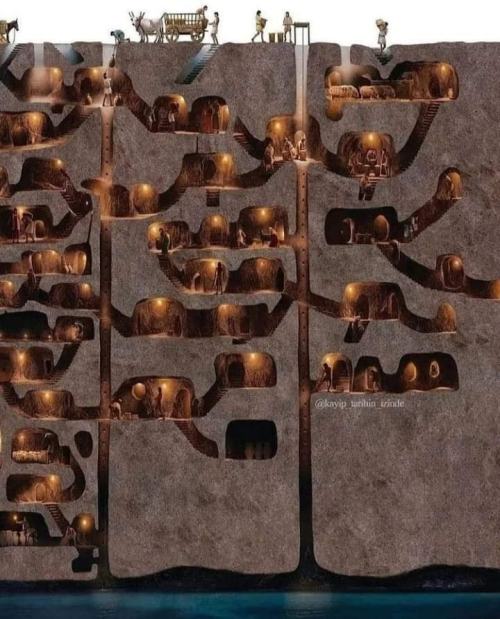
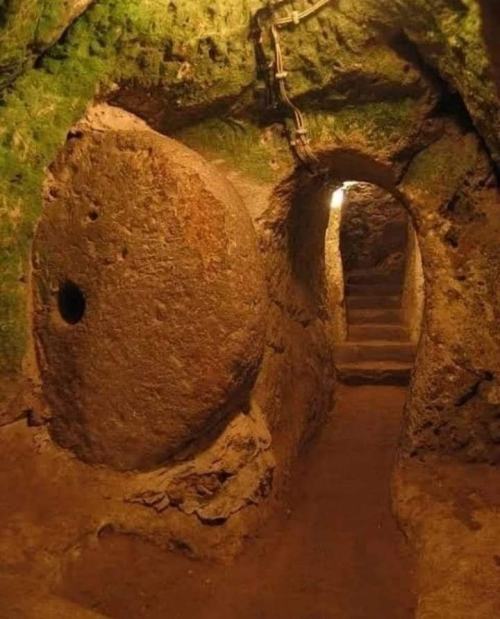
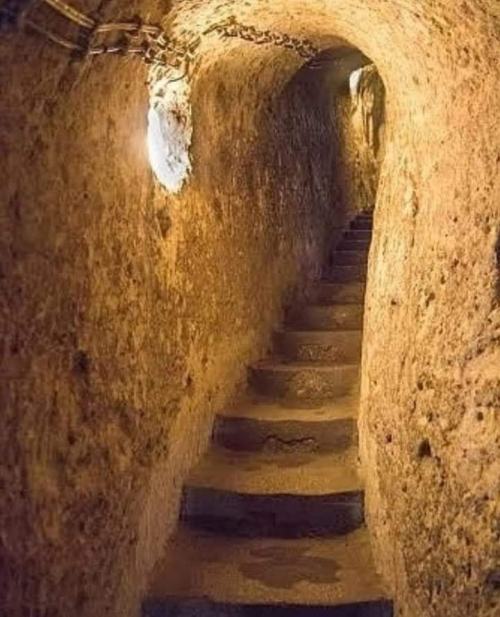
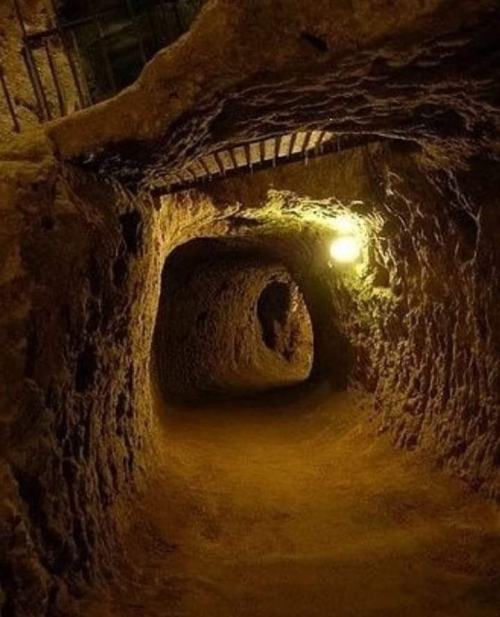
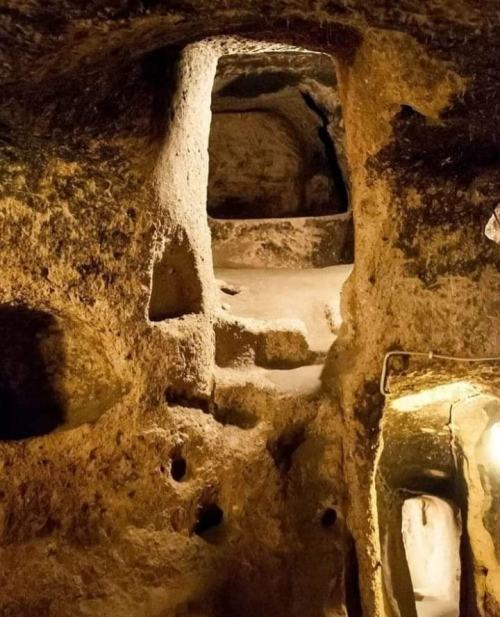
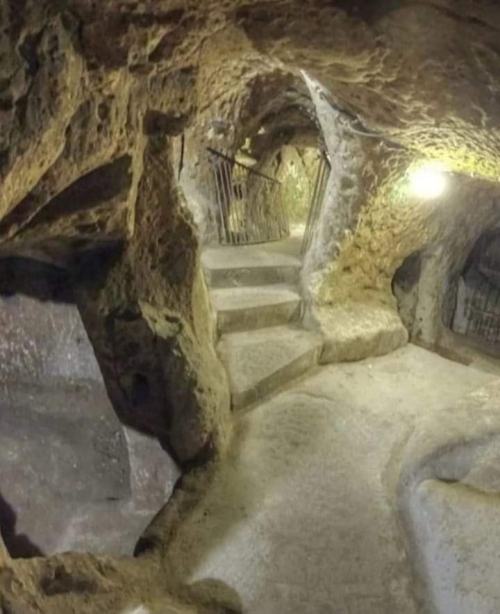

In 1963, while doing renovations on his home, a man broke through an exterior bedroom wall in his home and discovered a tunnel entrance. What he found behind that wall stunned historians, archeologists and the world. The lost ancient underground city of Derinkuyu had been discovered. A multilevel series of rooms, carved from the soft volcanic rock in the Cappadocia region of Turkey, Derinkuyu extends to a depth of over 200ft. Believed to have been constructed by the Phrygians, an Indo-European people originally from the Balkan region, it dates back to the 8th Century BCE. Capable of holding up to 20,000 people, Derinkuyu had rooms for food stores, livestock, schools, kitchens, living and sleeping quarters and sanitary facilities. Small tunnels carved up to the surface allowed ventilation throughout the city. Entrance tunnels were carefully hidden in the hills surrounding Derinkuyu and connected to the city. One of these tunnels were discovered in 1963 when workers removed the bedroom wall. It is believed the city was originally carved as an escape from marauding Arab armies in 9th Century BCE and continued over the next several hundred years. The city was used often as a refuge during the Byzantine Era of the 5th through the 10 Century CE.
I decided I needed angst so here it is. It’s after the third partition of Poland when she still believed that Poland was dead.
—
{In shaky handwriting, a mix between Polish and Russian with a few tear spots on the paper}
Dear Pol,
I need you. I hurt so much. My head is so fuzzy. My hand is shaking, though you can probably tell from my handwriting. Oh my God- you know I don’t say that often. I just can’t think of anything better to say. Russia had me spend from dawn to noon shoveling the animal waste. Afterwards was moving these heavy things then cleaning then cooking dinner for everyone. After that I had to clean up the stables again. I can’t remember the last time I ate. I can’t get rid of the smell. Please. Please don’t be dead. I’m losing hope. My head is so fuzzy. I feel like I’m forgetting who I am. I feel like I’m becoming a mindless servant. Please. Please don’t be dead. I need you please don’t be dead.
Your wife,
Gabi
sometimes i marvel at the fact that people actually tell me they’re intimidated by me or scared of me when i am??? the embodiment of this gif???? thats literally all i am

why afraid
BIRTHDAY TOMORROW
TOMORROW? BIRTHDAY? IMPORTANT ONE! TOMORROW! SLIGHTLY TERRIFIED? BUT STILL, TOMORROW! ADULTHOOD??????? PLEASE SPARE ME???
As of yesterday, I have officially applied for grad school. Everyone send me some good vibes or thoughts or prayers or whatever you feel most suitable! I really really want to get into this school.
These past four years have been extremely hard for me. We were in a really bad financial state with my dad on disability and my mom out of work, and my dad was very ill with kidney and heart failure and in and out of the hospital. Then my mom good a job last winter, then the plague hit, then we moved, then my dad died. It has been a fight to stay in school, to do well enough to graduate. It feels like every semester is a boss battle and I'm doing my best to stay afloat. It's been hell, it really has, but I'm doing my best, I'm pushing through, and now I'm getting ready for grad school and graduation.
If I can make it through this, I can make it through anything, and we'll all get through this together. Have faith in yourself! And wish me luck on getting in, this is a big deal.
Please don't reblog!
*God slides it back* I don't take bribes.
*slides God two dollars* I want a girlfriend
“I definitely didn’t want to root [Corpse Bride] in a specific place, and wasn’t really interested in what real ethnic origins of the tale were, because the thing that got me was the fable aspect of it”⁹.
Jewish legends are, well, legendary. They are filled with mystery, magic, fascinating creatures, wild adventures, and dazzling heroes. But if you ask most people, even most Jews, they may be largely unfamiliar with Jewish folktales outside of the Bible or Fiddler on the Roof. That is until you unravel the way in which Jewish folklore has been commodified and removed from its Jewish roots in order to be suitable for a non-Jewish audience.
This phenomenon is not new and not singular to Jews–not in the slightest. Cultural stories, and so much more, are routinely co-opted and commodified, erasing the culture, religion, and heritage of the original storytellers in order to make the story palatable for audiences outside of the original group. Sometimes so egregiously or viciously that it is largely unrecognizable to those who aren’t intimately familiar enough to spot it.
One such story is, allegedly, The Corpse Bride.
However, Tim Burton would convince you that the story he heard of (allegedly from within Lilith’s Cave) isn’t actually Jewish–in fact, he doesn't even know the origin. In their 2018 YouTube video, Jewish Erasure in Tim Burton Films, channel The Princess and the Scrivener plays a clip of Burton stating, “Joe had heard a little story, like a paragraph, which was an excerpt from an old fable–I don’t even know from what country it came, my recollection is that it didn’t have a specific place of origin. [I] Wasn't really interested in what the real ethnic origins of the tale were, because the thing that got me was the fable aspect of it”⁹.
READ MORE

Bodice, 1700s.
-
 lolofangirl reblogged this · 8 years ago
lolofangirl reblogged this · 8 years ago -
 iloveezrabridgerkananjarrus liked this · 8 years ago
iloveezrabridgerkananjarrus liked this · 8 years ago -
 ultrainfinitequest liked this · 8 years ago
ultrainfinitequest liked this · 8 years ago -
 poseidonslostspawn liked this · 8 years ago
poseidonslostspawn liked this · 8 years ago -
 amalgamoffaces reblogged this · 8 years ago
amalgamoffaces reblogged this · 8 years ago -
 amalgamoffaces liked this · 8 years ago
amalgamoffaces liked this · 8 years ago -
 bext-k liked this · 8 years ago
bext-k liked this · 8 years ago -
 mother-sakura liked this · 8 years ago
mother-sakura liked this · 8 years ago -
 lil-history-egg reblogged this · 8 years ago
lil-history-egg reblogged this · 8 years ago -
 zeefthecreator-blog reblogged this · 8 years ago
zeefthecreator-blog reblogged this · 8 years ago
Hello! I'm Zeef! I have a degree in history and I like to ramble! I especially like the middle ages and renaissance eras of Europe, but I have other miscellaneous places I like too!
270 posts
